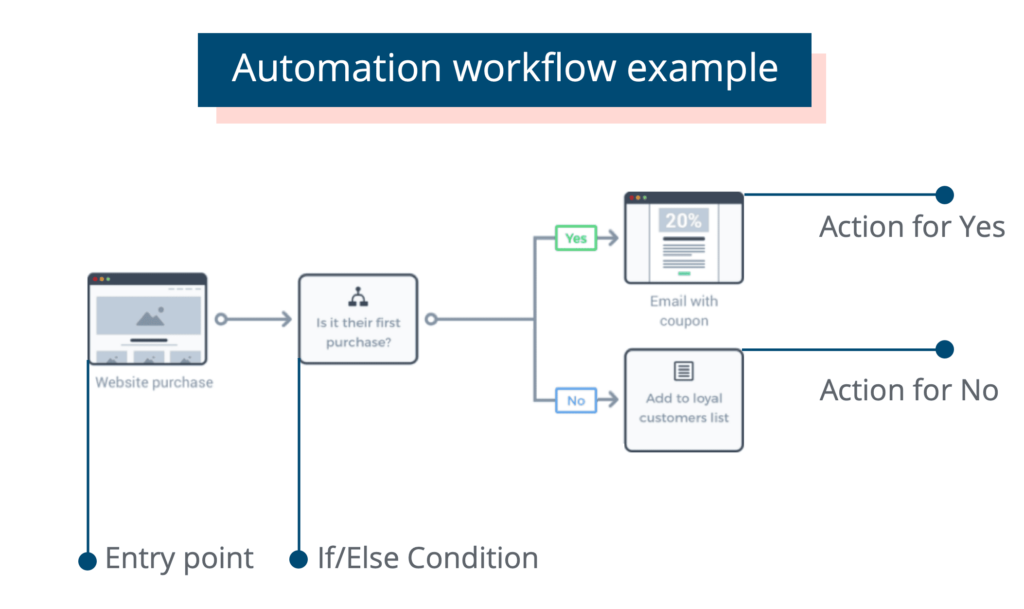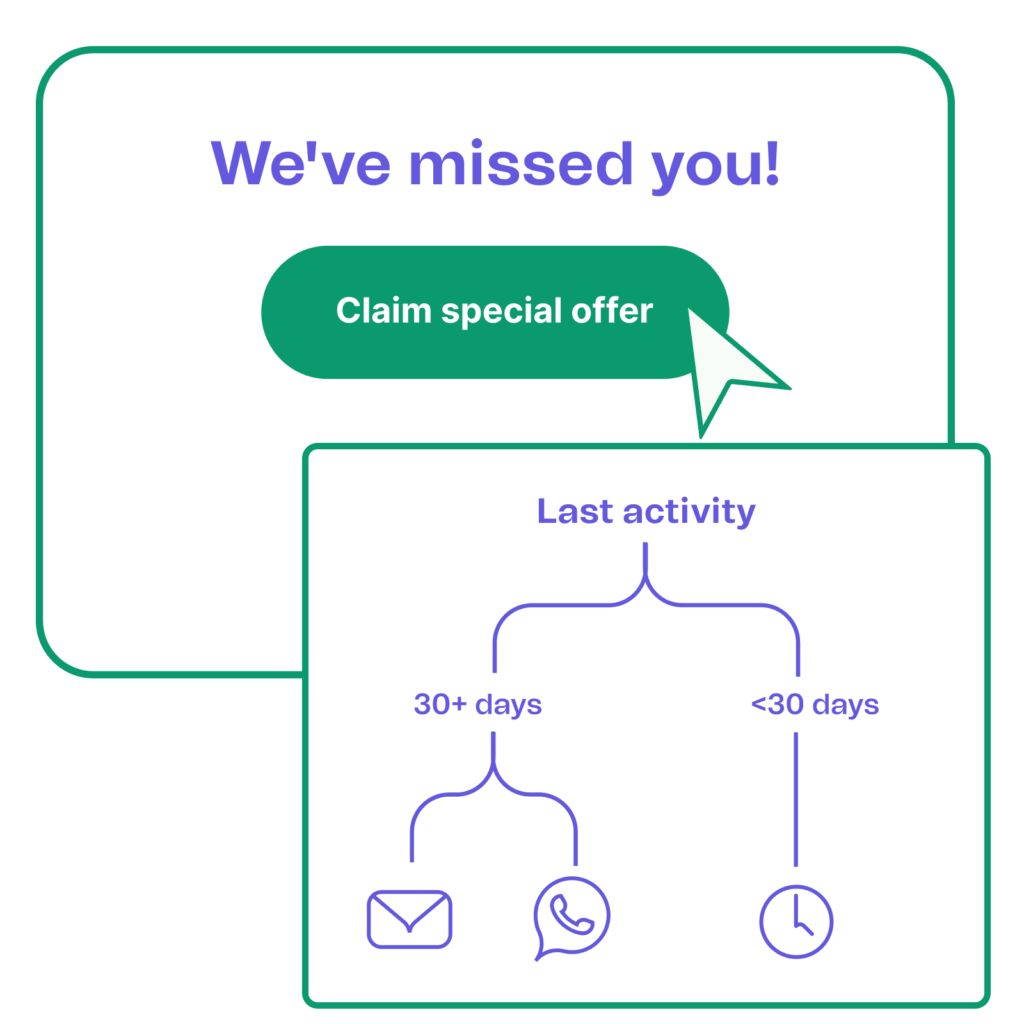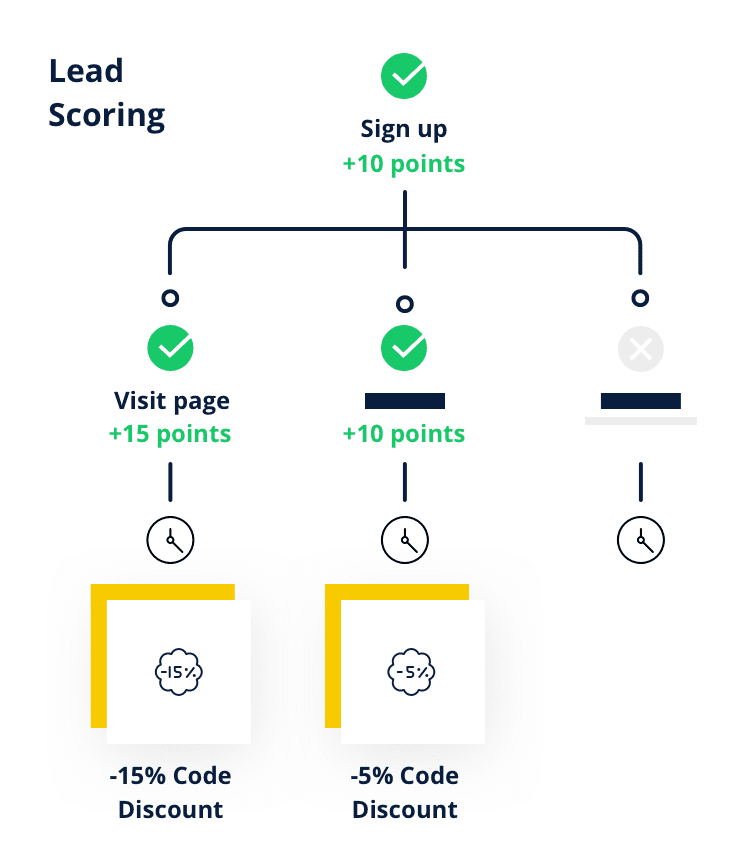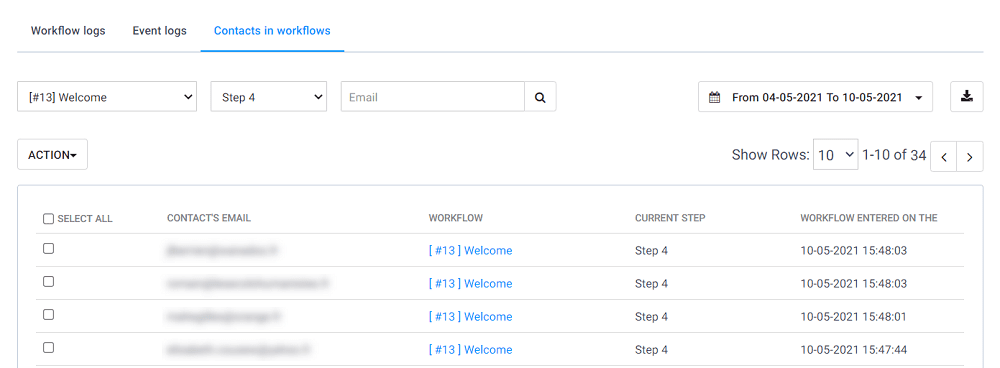If you’re questioning whether you need to automate your marketing or not, the short answer is yes. But before you spend time choosing the right automation platform and designing your workflows, let’s go into a bit more detail as to the main marketing automation benefits.
Marketing automation creates a lot of growth opportunities for businesses. Read on to learn how exactly marketing automation will help your company and why you should implement it at all stages of your funnel.
Table of contents
- What does marketing automation mean?
- 16 can’t-miss marketing automation benefits
- 1. Smooth customer journeys
- 2. Cross-channel marketing campaigns
- 3. Attribution made possible
- 4. Dynamic personalization
- 5. More (high-quality) leads
- 6. Effective lead scoring
- 7. Increased lead-to-sale conversion rates
- 8. Marketing and sales alignment
- 9. Full control of customer interactions
- 10. Better customer experience
- 11. Improved brand perception
- 12. Reduced workload = happier employees
- 13. Higher team productivity
- 14. Improved accountability in the workplace
- 15. More space for creativity
- 16. Increased marketing ROI
- Automate your marketing today
What does marketing automation mean?
Marketing automation is a broad concept. So what exactly are we talking about?
Marketing automation refers to the use of software to build sequences of actions based on predefined trigger conditions. Most commonly, the sequences follow if/then logic.

Keep in mind that it’s not limited to automation of email marketing campaigns. Marketing automation has a range of other use cases such as:
- Lead generation
- Lead scoring
- Paid advertising
- Customer relationship management (CRM)
- Marketing analytics
- Social media planning
- User onboarding
Nearly any marketing activity can be automated. This wide-ranging functionality gives marketers the time and resources to move beyond repetitive tasks and focus on data analysis and decision-making. Automation also enables capabilities like drip marketing.
To enjoy the benefits of marketing automation, you'll want to add it to every aspect of your marketing strategy, not just email campaigns or CRM. That’s where automation software comes in handy. Brevo offers a complete toolbox that helps you to automate your marketing campaigns from Facebook ad management to lead nurturing.
16 can’t-miss marketing automation benefits
When implemented across all your marketing activity, automation can lead to some pretty impressive benefits. Let’s take a look!
1. Smooth customer journeys
Marketing automation allows you to guide your audience through a tailor-made customer journey.
Without automation, you’d need to follow every step of every marketing lead just to respond with targeted content. In an automation setup, a user enters the sales funnel and moves down through it without any manual effort from your team.
For instance, the path of a user who has been targeted with a Facebook ad might look like this:
A user…
- Comes across your paid social ad;
- Clicks on it;
- Gets added to your remarketing list;
- Sees more relevant ads;
- Views a product, but abandons the cart;
- Receives an email with a discount for the product they viewed;
- Gets assistance from the chatbot;
- Buys the product.
And this is only the beginning of the email marketing customer journey! After converting, a customer should start receiving cross-sell emails and seeing ads with relevant offers that encourage them to make repeat purchases, over and over again.
2. Cross-channel marketing campaigns
Cross-channel marketing automation allows you to follow prospects and customers across an array of different channels.
Marketing automation tools typically combine advertising campaigns, live chat, SMS marketing, email sending, CRM, and other features under one roof — making it easy for you to build custom cross-channel marketing workflows and reach your customers wherever they go.

A cross-channel marketing automation workflow in Brevo
With automated sequences, you can reach cart abandoners with relevant offers by email, target warm leads with Facebook ads, or send SMS notifications to webinar attendees.
3. Attribution made possible
Marketing attribution is the way to assess how different marketing campaigns have contributed to reaching your desired outcomes. In multi-channel marketing, it’s the only way to evaluate the performance of individual marketing channels and set priorities.
Doing marketing attribution without automation software is simply impossible.
Imagine you’ve reached a prospect with a Facebook ad campaign, brought them to your company blog, and nurtured them with a series of marketing emails. After receiving your third email, the prospect has bought your product. Unless you’ve connected all the touchpoints with an automation solution, you can hardly track the entire path of that user. In this case, you’ll attribute the sale to that last email.
Marketing automation eliminates unfairness and offers visibility into the role of every customer touchpoint leading up to purchase.
4. Dynamic personalization
Dynamic personalization is the act of customizing the content a user sees based on their online behavior or specific characteristics or demographics. With more than 70% of people expecting companies to deliver personalized interactions, email personalization drives up to a 15 percent revenue lift.
Imagine personalizing all your marketing content manually. Not only would it be time-consuming, but it’d hardly be possible from a technical perspective.
Automation software dynamically personalizes chatbot replies, emails, ad copy, and any other content forms. It collects and processes large amounts of customer data instantly to adapt content to each individual user and deliver unique experiences. No wonder marketing experts love it!
5. More (high-quality) leads
80% of companies see an increase in lead generation after implementing marketing automation. You can be one of them!
To generate leads at scale, you just need to create a lead magnet, build a signup form, and put it where your target audience is most likely to find it. The rest of the work will be done by your marketing automation solution.
You can also build a lead generation chatbot to identify potential customers by their behavior, spark their interest, and add their contact information to the relevant segment.
There are countless ways to automate lead generation. You can set up PPC campaigns, use lead gen tools, or do referral marketing — just to name a few. But regardless of the method(s) you choose, the result is a steady stream of leads.
6. Effective lead scoring
Marketing automation eliminates the challenges of manual lead qualification and allows you to create a solid lead scoring model.
An automated lead scoring model dynamically qualifies leads using predefined criteria like user actions and events. With a marketing automation system, you can build a setup that assigns points to leads and then triggers certain actions depending on the lead score. Take a look at the example workflow below:

A lead scoring workflow set up with Brevo
Instead of constantly monitoring lead activity, you can include lead scoring in your marketing workflows and use scores as triggers for immediate action.
One of the use cases of automated lead scoring is dynamic list segmentation. You can use marketing automation to group contacts based on their scores in real time. With automated list segmentation, you’ll always reach your audience with relevant messages.
7. Increased lead-to-sale conversion rates
The lead-to-sale conversion rate is a measure of your company's effectiveness in converting leads into paying customers. It’s often also the biggest concern of growth marketers.
You can’t convert all your marketing leads. The majority of contacts on your mailing list will never become paying customers. Therefore, you can’t afford to lose those few warm leads. Reach them with timely campaigns on the right channels!
To convert more leads into sales, you need to entrust your lead capture, qualification, and nurturing to marketing automation software. By doing so, 77% of companies increase lead-to-sale conversion rates.
By optimizing customer journeys, marketing automation workflows follow your leads all the way from the moment they’ve interacted with your company to a sale. There’s no way you’ll miss a warm lead or forget to follow up — your automation software has got you covered.
8. Marketing and sales alignment
Automation makes it easier for marketing and sales teams to exchange information and collaborate.
First of all, automation improves transparency. Every sequence can be tracked by anyone who has access to it. Whenever a sales rep or marketer has questions about the workflows, they can find the answers in the automation software.
Secondly, by facilitating lead qualification and nurturing, automation allows marketing teams to deliver more quality leads to sales departments. Marketers and sales reps can also work together on the automated lead scoring model or other critical workflows to ensure everyone is on the same page.
And lastly, marketing automation platforms usually combine the most important features for marketing and sales, creating a common workspace for both teams.
9. Full control of customer interactions
No more missed conversations or lost data. Marketing automation gives you control over every interaction between your customers and your brand, which means that:
- You always find detailed statistics on workflows
- Your data never gets outdated
- You know exactly which workflow works and which doesn’t
- You have an overview of each contact’s journey through your funnel
- You never miss a conversation
- Your campaigns are timely and relevant

Marketing automation statistics in Brevo, sorted by contact
10. Better customer experience
Marketing doesn’t end when a lead converts. By setting up automated workflows for nurturing existing customers, you’ll improve their experience with your company and increase their lifetime value.
Marketing automation helps you reach your customers with seasonal discounts, product updates, satisfaction surveys, company news, and helpful content to support them in their journey. It’s also a source of valuable consumer insights that you can use to tailor your content to your customers’ interests and pain points.
For example, you may design a workflow where your ecommerce customer receives a replenishment email with an exclusive discount code when a product they’ve bought previously is about to run out. Or if you offer a SaaS product, you can set up a chatbot that will help users resolve problems immediately, without turning to customer support.
11. Improved brand perception
What do you do if a company sends you tons of irrelevant messages? You unsubscribe from their communications. If you keep getting their emails — which is likely the case when a company isn’t good with using data — you get annoyed every time you see content from the brand on the web.
Automated campaigns won’t put you in that position. You won’t need to manually track unsubscribes. The moment a contact requests to be removed from your list, they won’t receive any more messages.
12. Reduced workload = happier employees
Aside from affecting your relationships with prospects and customers, marketing automation has a significant impact on how your employees work.
Without automated workflows in place, marketers need to constantly monitor statistics and respond immediately to every customer action. In such a setup, the entire team is absorbed in boring, repetitive processes and has no time for more important strategic work.
Automation tools reduce your team’s workload and help improve their well-being.
And with a lower workload, you won’t need to hire more people to perform tasks that could have been automated.
13. Higher team productivity
Marketing automation enables your team to do more work in less time.
By taking over tedious tasks, marketing automation software allows marketers to do work that matters more and deliver better results. For instance, instead of wasting time on scoring leads manually, your marketing team can spend time finding ways to optimize your lead nurture strategy and increase conversions.
14. Improved accountability in the workplace
One of the biggest benefits of marketing automation for teams is increased accountability.
Accountability in an organization refers to the ability of team members to stick to their commitments, complete projects on time, and meet their KPIs. It can be a serious problem for organizations with low digital adoption.
Automation software addresses the challenge of assessing marketing campaign performance and creates a transparent view of every marketing interaction. Serving as a digital workspace for your marketing team, it makes it easy to assign tasks and trace the work done.
15. More space for creativity
The neverending flow of boring tasks leads to burnout. By taking the burden off your marketing team, you’ll create a more motivated and productive workforce.
Now when your employees don’t have to perform repetitive actions manually, they have more energy for innovation and creativity. While automation software handles routine workflows, your marketing team can focus on designing more engaging content and coming up with new marketing experiments.
16. Increased marketing ROI
It takes time and money to implement marketing automation. But eventually, the effort pays off.
Reduced team workload, higher productivity, increased conversions, and other benefits brought by marketing automation — all of these result in one significant outcome, which is increased ROI.
Marketing ROI is the profit you receive from investing in a particular marketing initiative. The average ROI of marketing automation is $5.44 per every dollar spent on the implementation.
Yet you can’t expect immediate results from implementing marketing automation. But a few months after you set up automation workflows, you can calculate the ROI of your setup with a simple formula:
Marketing ROI =(Sales Growth - Investment)/Investment 100
Further reading: 5 Ways to Maximize ROI with Marketing Automation
Automate your marketing today
You clearly don’t want to miss out on these marketing automation benefits!
So where do you start?






